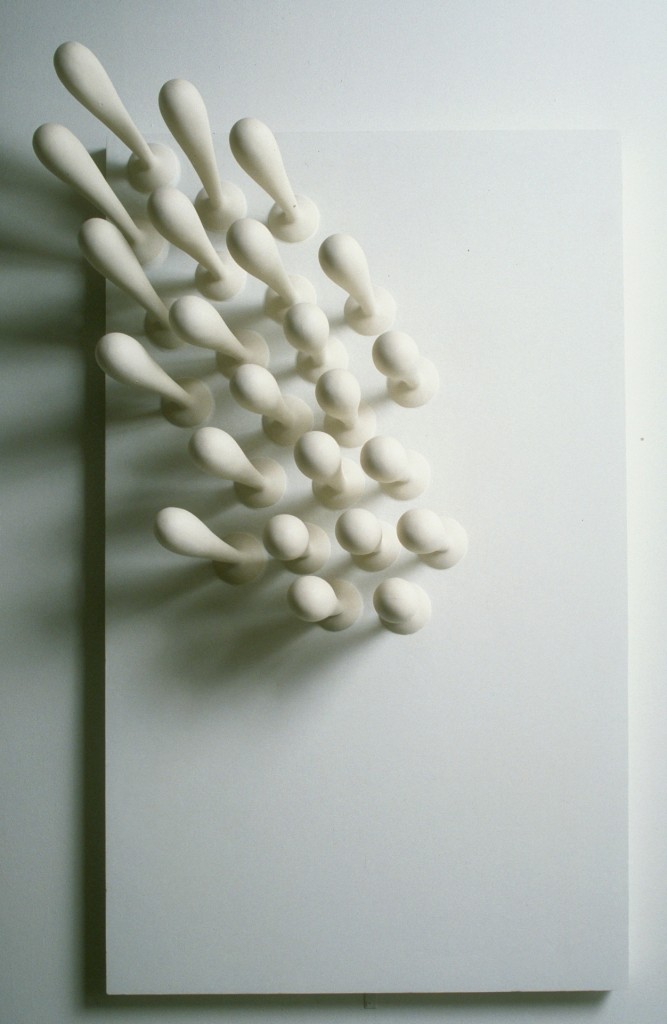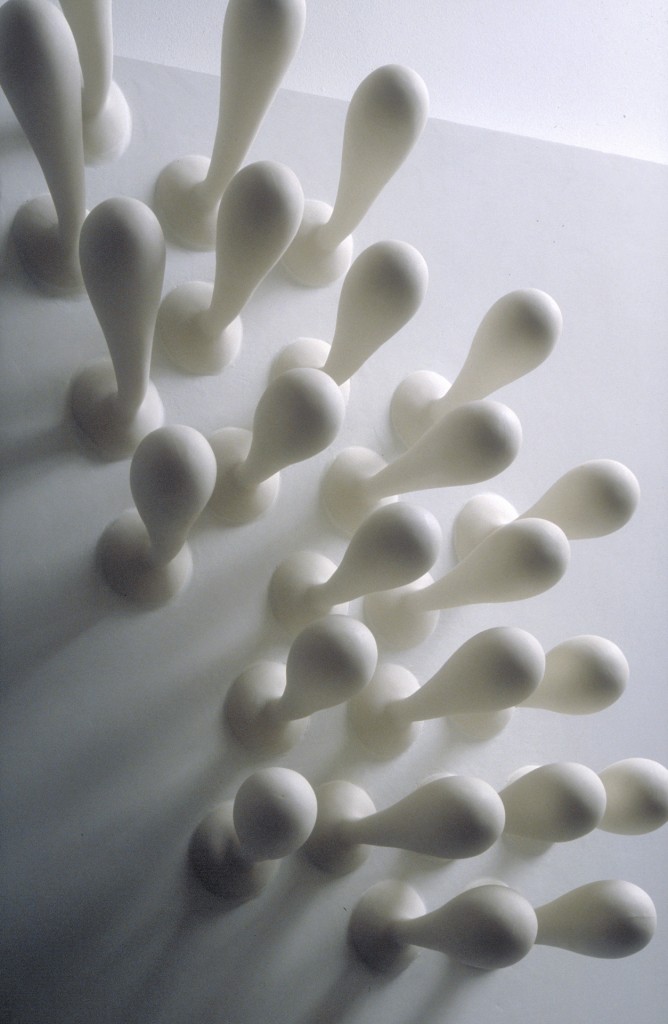White Vanishing 2000
White Vanishing, 2000
Porcelain, wood, latex paint
48(h) x 29(w) x 11(d) in
I explore casting multiple element of a simple form, expressed through added dimensions of repetition, order, chaos, and structure. By juxtaposing the highly polished porcelain components and the blank space with the ethereal qualities of light and shadow, my work attempts to create a spiritual time and space through the viewers’ contemplation, and allows a renewed encounter with the infinite world.
_____________________________________________________________________________________________________________________
white vanishing, a formal poetic of strain
by stefano catalani
There is a very healthy formal tension in Yuki Nakamura’s work. Forget about narrative content. And forget also about surface, about the smooth roundness and tainted whiteness of her porcelain. Get the clatter out of the way, and what you are left with are form, plastic values and spatial relationships. You are now poised in the field of formal forces the artist materializes for us. You can’t help but be attracted by the number, the juxtaposition and the shape of the sculptural elements. As an example, consider such recent works as Fictional City (2005), City (2005), and City Island (2007), where the formal composition translates into a reflection on the intrinsic relationality of human social nature. You come to understand, as the artist does, how those building-forms take on a shape in relation to each other, how they adjust to one another to form an entity which is also a unity. In Nakamura’s work the formal tension therefore translates into seductive emotional and relational forces that shape the forms and bind them to one another.
Fictional City can’t be fully understood without considering the artist’s earlier research conducted in a more abstract, formal vocabulary. Between 2000 and 2006 Nakamura has produced a series of works loosely titled White Vanishing. In most of these pieces either drop-shaped or bowling-pin-like elements are poised in an oppositional relationship with the surface on which they rest or to which they attach, while displaying a group behavior, a sense of belonging to each other, by means of their harmonized juxtaposition. Opposition (an escape attempt?) and cohesion (the group) are the two poles around which the artist spins our experience of these installations. By means of pure formal values, both a comforting sense of belonging and a physical and emotional tension are elicited.
In White Vanishing (2000) the elongated pins are stretched as in a titanic effort to detach from the vertical surface. Their plasticity suggests we catch them in the moment of separation, materializing right in front of our eyes the forces at work in pulling, stretching, tapering and finally detaching. The pure porcelain could suggest an absence of emotions, and yet the violence implicit in this eradication brings a whole new level of emotion to the piece: the shapes — and the strain those shapes seems to be modeled by — speak of cultural and emotional tension in the insularity of the immigrant life, and rejection of automatic cultural common grounds.
Louise Bourgeois once said, Art is restoration: the idea is to repair the damages that are inflicted in life, to make something that is fragmented — which is what fear and anxiety do to a person — into something whole. I think this applies to Nakamura’s work in general: life separates us from places of comfort, people we love, certainties never to be experienced again. Nakamura’s work gives shape to such cultural and emotional burden by shaping and staging a formal poetic of strain.


